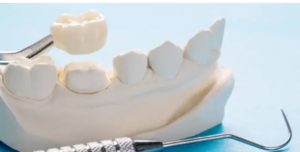Dental crowns can help repair a damaged tooth or secure an incomplete dental bridge. Furthermore, they can enhance one’s smile by changing size or shape.
 Crowns can be constructed out of various materials, including porcelain, zirconia and metals like gold. Different my-dentist.com.au dental crowns Adelaide options provide more natural-looking crowns, while others may provide more robust or longer-term solutions.
Crowns can be constructed out of various materials, including porcelain, zirconia and metals like gold. Different my-dentist.com.au dental crowns Adelaide options provide more natural-looking crowns, while others may provide more robust or longer-term solutions.
Dental Impression
Impression procedures involve placing putty-like material in the mouth to create an exact mould of teeth and bite structure. Though this my-dentist.com.au dental crowns Adelaide process can trigger gag reflex and discomfort, accurate casts produced during this process are essential in creating restorations, diagnosing malocclusions and fitting pro athletes with mouth guards.
Impression materials have evolved considerably since beeswax was first invented, and choosing an effective impression material requires knowledge of its chemistry and operation. Below are some of the most commonly used impression materials and their advantages and disadvantages.
Reshaping the Tooth
Dental crowns help restore both function and appearance to damaged teeth. Usually made of metal, resin, or porcelain.
Before placing the crown on a tooth, your dentist must reshape it first to ensure it fits comfortably over it without impacting other parts of your bite. The extent of this reshaping depends on the type of crown being used – for instance, metal-based crowns require less reshaping than porcelain ones.
Once this step has been completed, your dentist will use the paste to take an impression of the prepared tooth, which will then be sent to a laboratory to create the crown. Your dentist may even place a temporary crown over it while waiting for its completion in the lab.
After receiving a crown, you may experience tooth sensitivity for several weeks following its placement. It is normal and should only occur with hot or cold foods; super sticky foods like taffy and caramel should also be avoided to reduce discomfort caused by sensitive areas or tender spots. Over-the-counter pain relievers should help alleviate discomfort and tenderness caused by this sensation.
Preparing the Tooth for the Crown
Depending on the complexity and location of your crown request, my-dentist.com.au dental crowns Adelaide may first need to file down the tooth(s) covered by it – typically under local anesthesia- to make your experience as comfortable as possible.
Ceramic crowns are among the most realistic-looking dental restoration options your dentist can provide, as they allow some light through (translucence) and look very much like natural teeth. Ceramics can also help solve various cosmetic dental issues; however, these crowns are typically not covered by insurance as cosmetic procedures or elective procedures are usually considered more affordable alternatives.
Making the Crown
Numbing the area around a tooth, a dentist will file down its chewing surface and sides to prepare for its crown – the amount depends on which crown type will be used.
Dental porcelain crowns (sometimes called “porcelain onlays”) are custom layered using feldspathic porcelain for an authentic, natural-looking finish. You have two options for bonding them directly onto a tooth: directly adhering them, allowing their natural colour to show through, or layering over an aluminium oxide core (procera crowns) for strength and translucent aesthetic.
Zinc crowns are created using the same process as porcelain onlays but made out of pure zirconia rather than ceramic material, making them much harder and less likely to break than their ceramic counterparts.
Crowning the Tooth
Once the crown is ready, your dentist will use dental glue to secure it to the tooth or gums as part of the crowning procedure. Anesthesia may also be administered during this step for added comfort and pain-free crown placement.
Once their crown has been fitted, patients should continue with regular brushing and flossing routines as usual. Pain or sensitivity in their crowned tooth may indicate it has been placed too high and needs adjusting accordingly.
Dental crowns are highly versatile solutions to many oral health concerns, from improving chewing function and holding cracked teeth together to helping restore damaged tooth appearance. In addition, they may reduce future health complications.